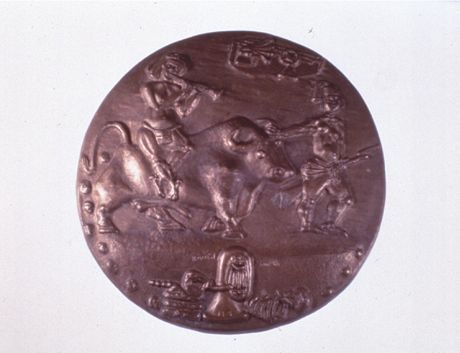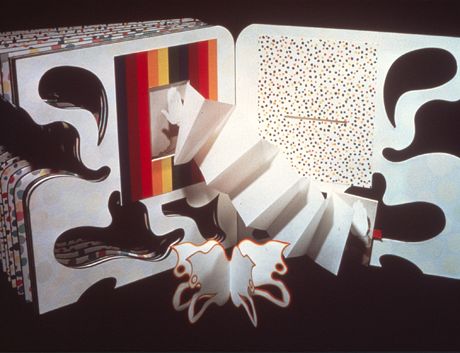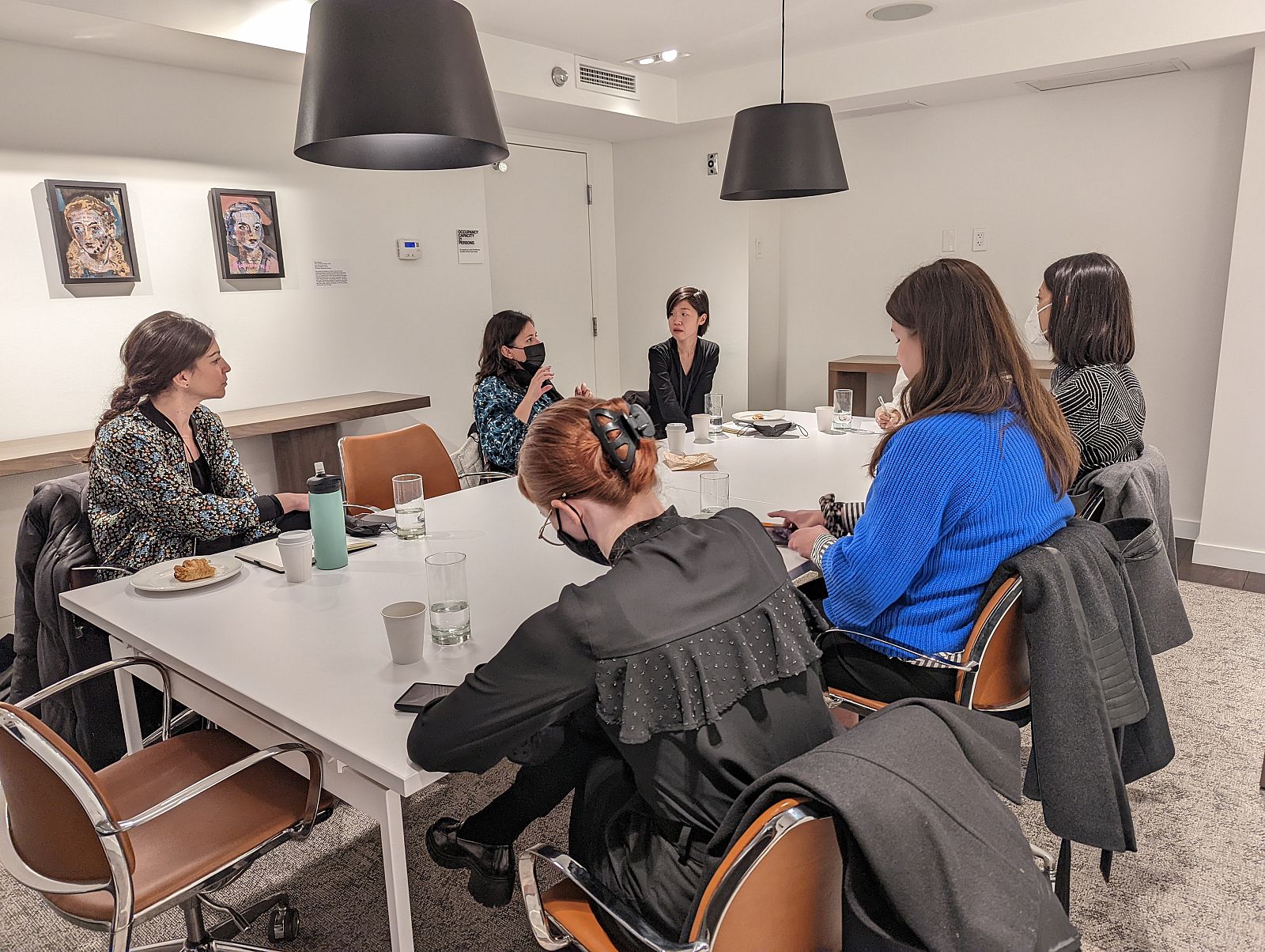Curator Gala Berger developed this proposal during the 2022 Curatorial Intensive in Kampala. It was on view at MAC, Museum of Contemporary Art of Lima, Peru in early 2022.
This exhibition is the result of an invitation extended to Olinda Silvano (Reshinjabe) and the Non Shinanbo (Our Inspirations) women’s collective to rethink and represent the last two years of the health, social, and political crisis based on their concerns, urgent needs, and desires. Non Shinanbo members are part of the Shipibo-Konibo community, an Indigenous group living in Cantagallo, Lima, Peru. Located on the right bank of the Rímac river, Cantagallo is currently the most populous Indigenous urban settlement in Peru.
The project was developed for INSITE Commonplaces, an initiative that commissions forms of production rooted in the local, and involves curators, artists, and writers. Between June 2021 and April 2022, twenty-nine women of the Non Shinanbo group made nearly one hundred works in different sizes and materials, such as paintings on fabrics dyed with mahogany bark, paintings on canvas, embroidery, fabric collages, and many others. The set of works, from which we presented a selection, offers an acute testimony about the women’s community experience, the healing power of plants, solidarity among women, and forms of collective care in a moment of emergency as a result of COVID-19. The Cantagallo community was severely affected at the beginning of the pandemic and, like many other Indigenous populations, they had to deal with the virus’s advance without access to intercultural medical care that incorporates a health care model with an Indigenous perspective.
The works also elaborate on family bonds, histories of migration, memories of the Amazon, and the complexities of living in Lima while trying to maintain their Shipibo roots. One important protagonist is kenè – meaning “design” – based on the drawings of the skin of the anaconda, which has a deep symbolic meaning: it represents the geography of the forest, wildlife, and other living organisms. The elaboration of the kenè is intrinsically related to the knowledge about plants, and it is accessed through the visions produced by introspection induced by plants such as ayahuasca and piri-piri. The pieces present us with a Shipibo vision of the world in which fish, rivers, trees, and fruits are not passive entities to be dominated, but rather active beings with their own knowledge. From this perspective, human life, nature, territory, and spiritual beings exist in a dimension of reciprocity and continuation.
This exhibition offers a different way of understanding the recent social emergency and amplifies the struggles of the Shipibo Konibo people and their demands for the preservation and respect of their ancestral knowledge, urgent action against the destruction of the Amazon, and better living conditions for Indigenous people in Peru and everywhere.
Artists: Rosa Pinedo, Jessica Silvano, Salome Buenapico Silvano, Soraida Cumapa, Emilia Teco, Doris Gomez, Dora Inuma, Wilma Maynas, Cecilia Melendez, Edelmira Mori, Fenicia Mori, Karina Pacaya, Claudia Pacaya, Delia Pizarro, Metsá Rama, Juana Reategui, Betty Reatigui, Silvia Ricopa, Tita Rona (Juana Nunta), Michita Sampayo, Cordelia Sanchez (Pesin Kate), Olinda Silvano, Lucy Silvano, Sadith Silvano, Zaida Silvano, Nelda Silvano, Inés Sinuiri, Isolina Tananta, Priscila Vásquez and Dely Zavaleta.
Curators: Gala Berger, Miguel A. López y Olinda Silvano (Reshinjabe)
Exhibition design: Germen Estudio






